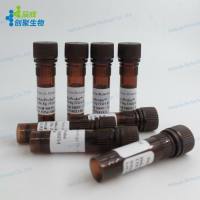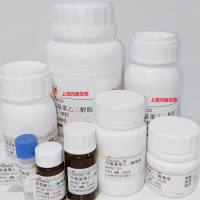Recommended Experiments with Isolated Mitochondria
互联网
Recommended Experiments with Isolated Mitochondria
Each oxygraph setup will consist of two stations, each with dissolved oxygen chamber and chart recorder, connected to a two-channel oxygen monitor. Please work as a group, using both chambers. The experiments were designed to be conducted in the order listed. Information from the first experiment will be useful in interpreting the second, and so on. You can (and should) conduct experiments in parallel, however.
Two of you should start the first experiment using one chamber, while the other two starts the second. The "action" is slow enough so that all four of you can monitor both experiments at the same time, and discuss what is going on. Every member of the group should be fully aware of what is going on and why, in both experiments. If there is something you do not understand, please ask the instructor or a teaching assistant for help, or in the event that you need to move on, make a specific note to look into it later.
If one experiment fails for some reason but the other is okay, then have the successful pair repeat the failed experiment (after thinking a bit about what may have to be fixed), while the first pair moves on. Continue to divide the experiments between the two chambers, sharing your experiences and asking questions. This way, everyone benefits from the complete experience, you won't be set back by mistakes, and you will have time to complete everything.
General procedures for experiments
To begin a series of experiments with isolated mitochondria, the oxygraph system should be calibrated with the same respiration medium that will be used throughout the study. Our medium of choice consists of 70 mM sucrose, 220 mM mannitol, 2 mM HEPES buffer, 5 mM magnesium chloride, 5 mM potassium phosphate, 1 mM EDTA, and 0.1% fatty acid free bovine serum albumin, pH 7.4. Prepare for calibration by running the stirrer with glass stopper removed, so that there is gas exchange between room air and the medium.
The beginning of the chart record should be marked with the names of participants, date, name of experiment, paper speed, room temperature, and sensitivity (in this case, 100% O2 saturation, full scale). Once equilibrated with respiration medium, the system is ready to go. Each subsequent experiment begins by rinsing the oxygraph chamber, adding respiration medium, and equilibrating the medium with room air.
Adding mitochondria
The recommended amount of mitochondria should be added with a micropipettor, after starting the recording. Mitochondria suspensions are viscous, so if pipetting accuracy is needed a capillary tube type pipettor with plunger is recommended. Mitochondria must be drawn up slowly for the same reason - it the tip is removed from the suspension too quickly, air is sucked in and one has a mess. A pipettor should be used to triturate the suspension to disperse the mitochondria, after which the chamber should be closed (glass stopper replaced in the custom made Gilson type chambers). A steady state (constant slope) should be obtained before adding reagents, since the mitochondria will initially deplete oxygen as they fill the vacant binding sites on the cytochrome oxidase complexes. They typically consume some oxygen without added substrate, most likely because they can oxidize free fatty acids that remain from the liver homogenization.
Adding reagents
Substrates, ADP, and poisons are added through a port in the chamber without exposing the medium to air. We add reagents through a capillary shaft in the glass stopper using a Hamilton syringe. The tip of the needle must be inserted completely into the chamber in order to mix the contents with the mitochondria suspension. If the tip of the needle is in the fluid stacked up in the port, it won't mix. To minimize cross-contamination between the poisons and the substrates, two color-coded syringes should be used, one for the substrates and ADP and one for the poisons. Know which reagents are poisons and which are substrates. In addition, the syringe must be rinsed with deionized water and the tip wiped before and after each use. Between runs, the glass stopper should be rinsed also.
Substrates (fuel sources) are added in excess so that oxygen runs out long before the supply of substrate becomes limited. ADP is usually added in limited amounts so that two rates are obtained, before and after ADP is depleted.
Before starting, read over the experimental notes and questions to consider .
Expt 1. Respiratory control on succinate
- Record the chamber volume, calibrate the system, and start the recorder.
- Add 15 µl mitochondria using a yellow tip pipettor, glass stopper removed. Replace the stopper, and note the initial rapid depletion of oxygen, which settles into a steady state (1 or 2 minutes). Start each oxygraph run this way, varying only the amount of mitochondria added. It may be necessary to adjust the volume of mitochondria, depending on purity of the preparation.
- Now, there cannot be respiration without a substrate, so something is providing fuel. Is the rate of delivery of electrons from that fuel efficient enough to maintain a chemiosmotic gradient? To check that, add 5 µl 0.02M ADP. If there is a gradient, what should happen?
- Add 20 µl 0.5M succinate.
- After waiting for a steady state, add 10 µl 0.02M ADP (thoroughly mix the ADP stock solution first). Wait for a steady state, and allow time to see a second steady state (2 or 3 minutes). The second slope change may not be as obvious as the first - view down the trace or use a straightedge to check.
- Add 10 µl 10 mM antimycin (an antibiotic). There will be an initial rise in oxygen content because the vehicle (ethanol) raises the oxygen content in the solution. Wait for a steady state.
-
Add 10 µl each 0.5M ascorbate and 10 mM TMPD (in succession - no need to record the intervening slope), wait for a steady state, then stop the chart record. Clean out the chamber and stopper, and prepare for a second run.
Expt 2. Respiratory control on glutamate
- Prepare the chamber, and with recorder running add twice the volume of mitochondria used in experiment 1. Obtain a slope. We use twice as much because oxygen consumption is slower with NADH-supported respiration.
- Add 20 µl 0.5M glutamate, obtain a slope.
- Add 10 µl 0.02M ADP, which should stimulate a faster respiration rate, after which oxygen consumption slows again.
- After confirming the second steady state following the addition of ADP, add 10 µl 10 mM rotenone - there will be an ethanol artifact.
- After observing the steady state in presence of rotenone, add ADP as above. If no slope change, proceed.
- Add 20 µl 0.5M succinate. The rate should increase considerably, followed by a reduced rate - a second steady state.
- Add 10 µl 0.5M KCN.
3. Uncoupling agents
- Produce state IV respiration on succinate, as you did in the first experiment.
- Add 10 µl either 10 mM 2, 4-dinitrophenol (DNP) or 10 mM FCCP.
- Record the slope, for comparison with the state III slope that you recorded for ADP stimulated respiration on succinate.
4. Inhibition of oxidative phosphorylation
- Produce state IV respiration on succinate, as you did in the first experiment.
- Add 10 µl 10 mM oligomycin. You should see a prominent ethanol artifact, followed by a steady state.
- Record the following steady state. Is there clear evidence that this antibiotic is either an uncoupling agent, or an electron transport inhibitor? What would have happened if oligomycin was either one of those?
- Now design an experiment to determine if oligomycin inhibits oxidative phosphorylation. [hint: it would inhibit ATP synthase, if that is the case]
- What agent should you add to determine if the mitochondria were exercising respiratory control? That is, how can you confirm that an intact chemiosmotic gradient was restricting the ETS?
- Do the experiment (you don't need to start a new oxygraph run).
5. Electron transport inhibition by malonate
- Prepare the chamber, start recording.
- Add 30 µl mitochondria, obtain a steady state.
- Add 5 µl 0.5M succinate, confirm an increase in the steady state.
- Without too much delay, add 10 µl 0.5M malonate, obtain a steady state.
- Repeat the malonate addition one or two times, until it appears that there is no further effect on the steady state.
- Add 5 µl 0.02M ADP.
- After determining whether or not ADP sped up respiration, add 20 µl 0.5M glutamate. Recall that the addition of glutamate does not usually speed up state IV respiration a great deal.
- Add 10 µl 0.02M ADP, record slope changes if evident.
- If you obtained respiration on glutamate, then add 10 µl 10mM antimycin.
- Add ascorbate + TMPD as before.
6. ADP:O ratio on ascorbate + TMPD
- If you have been getting very noticeable changes in steady state, especially when adding ADP, then try this. If your mitochondria are not well coupled, then there is probably no point in doing this one.
- When added together with TMPD, ascorbic acid maintains TMPD in a reduced state. TMPD is an artifical electron donor. Reduced TMPD donates electrons to cytochrome c. What, then, is the expected ADP:O ratio on ascorbate + TMPD?
- Test this expectation by putting 10 µl mitochondria into state IV respiration on ascorbate + TMPD (10 µl each), then adding 5 µl ADP.
- If possible, calculate an ADP:O ratio. Coupling tends to be very poor on this substrate combination, so the return to state IV may be difficult to detect. Do the best that you can.
7. Site of action of antimycin
- This elegant little experiment should narrow the possibilities for the location at which antimycin binds the ETS. Start with 20µl mitochondria and add either DNP or FCCP as was done previously, in order to uncouple the mitochondria. Alternatively, add 60 µl ADP to produce a prolonged state III respiration rate. The objective is to produce a very fast respiration rate, so that inhibition of electron transport is obvious and dramatic.
- Add succinate, confirm a slope, then add malonate. Use the volumes that gave you satisfactory results previously.
- Add glutamate, confirm a slope, then add antimycin.
- Add ascorbate + TMPD.
- You already knew whether or not antimycin inhibits respiration on succinate, of course. With this new information, can you determine with some precision where antimycin binds?
Additional experiments
Feel free to try anything else, especially if you have unanswered questions. After finishing an individual experiment, you might check the response to additional reagents before cleaning out the chamber. You can make the most of this opportunity by planning ahead, of course. Survival time of a typical mitochondria prep is 2 1/2 to 3 hours, then things go downhill.







